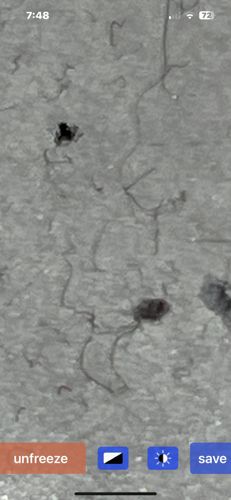Springtail
Scientific Name: Various species within Collembola, e.g., Isotomurus palustris (common wetland species), Entomobrya nivalis (common in leaf litter)
Order & Family: Order: Collembola (not an insect, but a related hexapod); Family: Various (e.g., Entomobryidae, Isotomidae, Onychiuridae)
Size: Typically 0.2 to 10 mm, with most common species being 1-3 mm long.

Natural Habitat
Springtails thrive in moist, humid environments. They are commonly found in soil, leaf litter, decaying wood, under bark, in compost piles, moss, fungi, and sometimes in damp areas indoors like bathrooms or basements. They can also be abundant on the surface of still water bodies.
Diet & Feeding
Springtails primarily feed on decaying organic matter, fungi, algae, bacteria, and sometimes pollen. Some species are predatory on other small invertebrates like nematodes. They are important decomposers.
Behavior Patterns
Springtails are often found in large aggregations, particularly in moist environments. They are known for their ability to jump using a furcula, a tail-like appendage folded under their abdomen. When startled, they release this furcula, propelling themselves into the air. They are detritivores, playing a role in decomposition. Their colonies can number in the thousands. They are most active in humid conditions and can be seen on the surface of water or damp soil.
Risks & Benefits
Springtails are generally harmless to humans and pets. They do not bite, sting, or transmit diseases. While large indoor populations can indicate excessive moisture issues, they are not considered pests that damage property. Environmentally, they are highly beneficial as decomposers, contributing to nutrient cycling and soil health. They break down organic matter, making nutrients available for plants, and are a food source for other small invertebrates.
Identified on: 8/29/2025